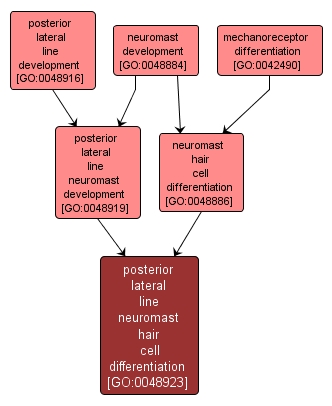| Desc: |
The process whereby a relatively unspecialized cell acquires specialized features of a posterior lateral line neuromast hair cell. (N.B. This may be development of neuromast hair cell type or a set of cell of neuromast hair cell type. This will involve the change of a cell or set of cells from one cell identity to another). Hair cells are the sensory receptors of the neuromast and are located in a portion of the neuromast called the sensory strip. Each hair cell of the neuromast is morphologically polarized as a result of the relative position of the single kinocilium and the clusters of stereocilia on its apical surface. There are approximately seven hair cells within each neuromast, with each hair cell innervated by afferent and efferent neurons. |














